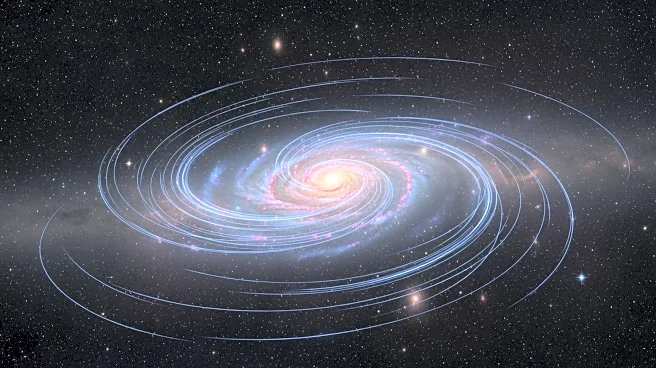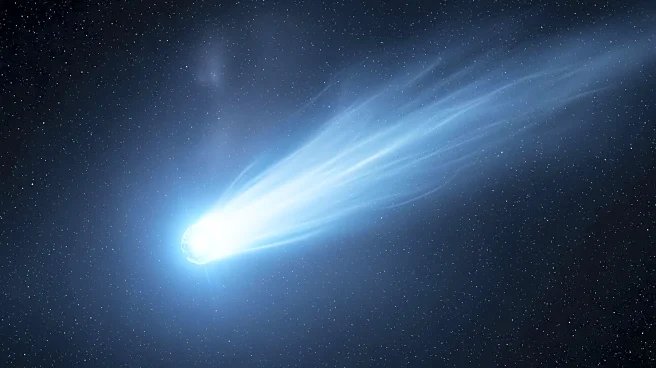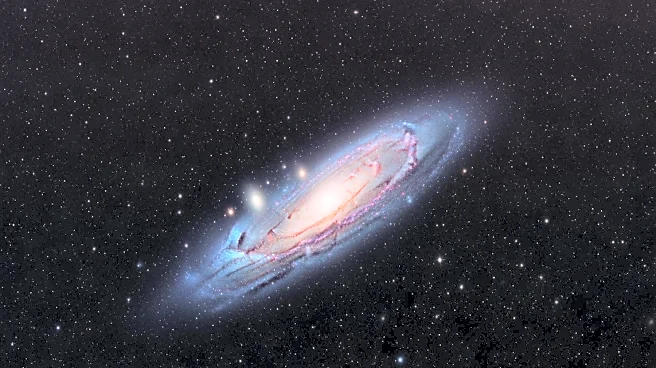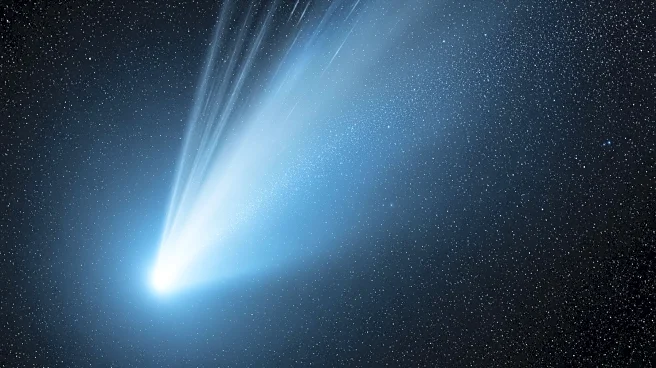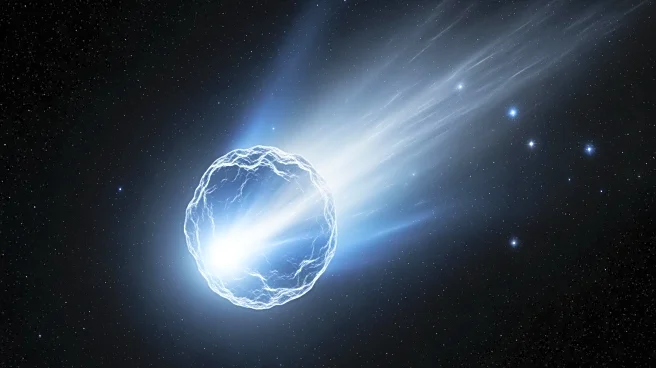What's Happening?
The Vera C. Rubin Observatory has captured a trail of light in the M61 galaxy, offering new insights into its history and abnormalities. The image, taken by the largest digital camera ever, suggests that
the galaxy may have torn off from a smaller one. M61, known for its high rate of star formation and numerous supernovae, is classified as a starburst galaxy. The newly discovered stellar stream, 180,000 light-years long, indicates that a dwarf galaxy was shredded by M61's gravity, potentially boosting star formation. This discovery was reported in the Research Notes of the American Astronomical Society.
Why It's Important?
The discovery of the stellar stream in the M61 galaxy is significant as it provides a deeper understanding of galaxy formation and evolution. The Rubin Observatory's ability to capture detailed images of galaxies will enhance our knowledge of cosmic phenomena and the structure of the universe. This finding supports the theory that galaxies are surrounded by streams, which are fundamental to their formation. The observatory's future observations, expected to capture light from 20 billion galaxies, will further illuminate the mysteries of the cosmos, contributing to advancements in astrophysics and space science.
